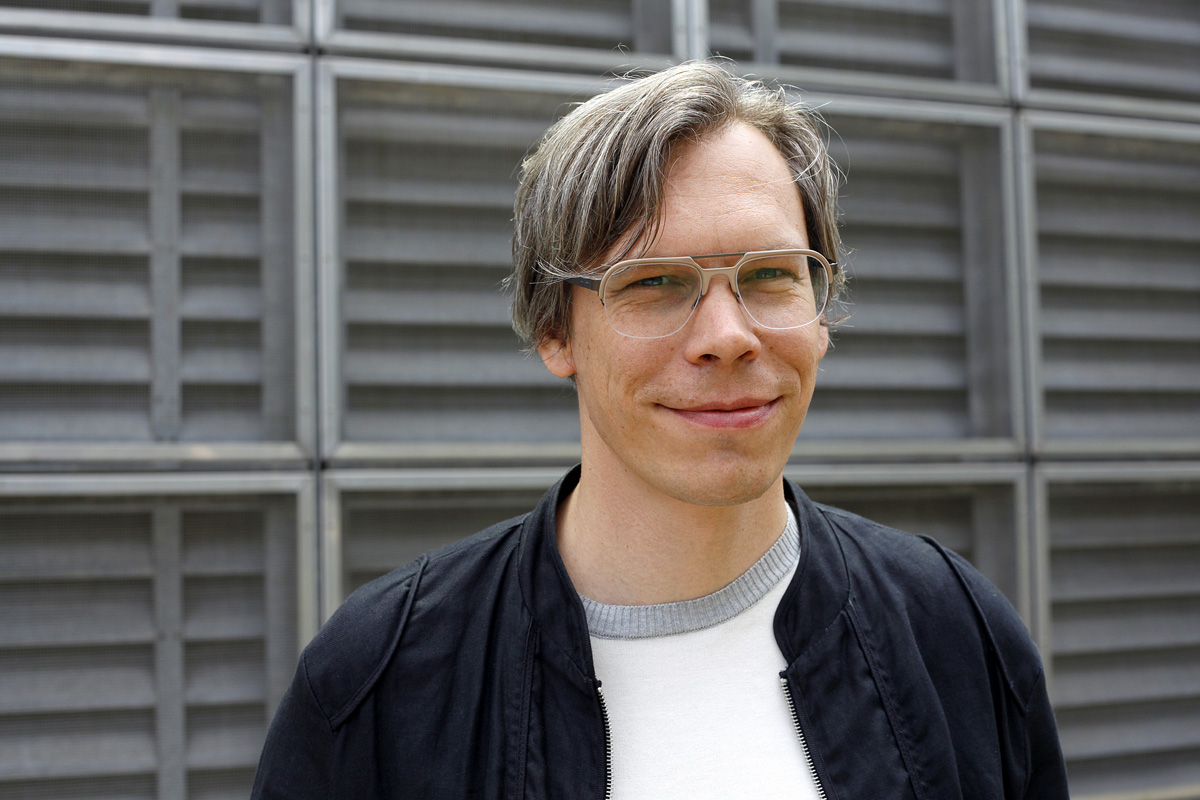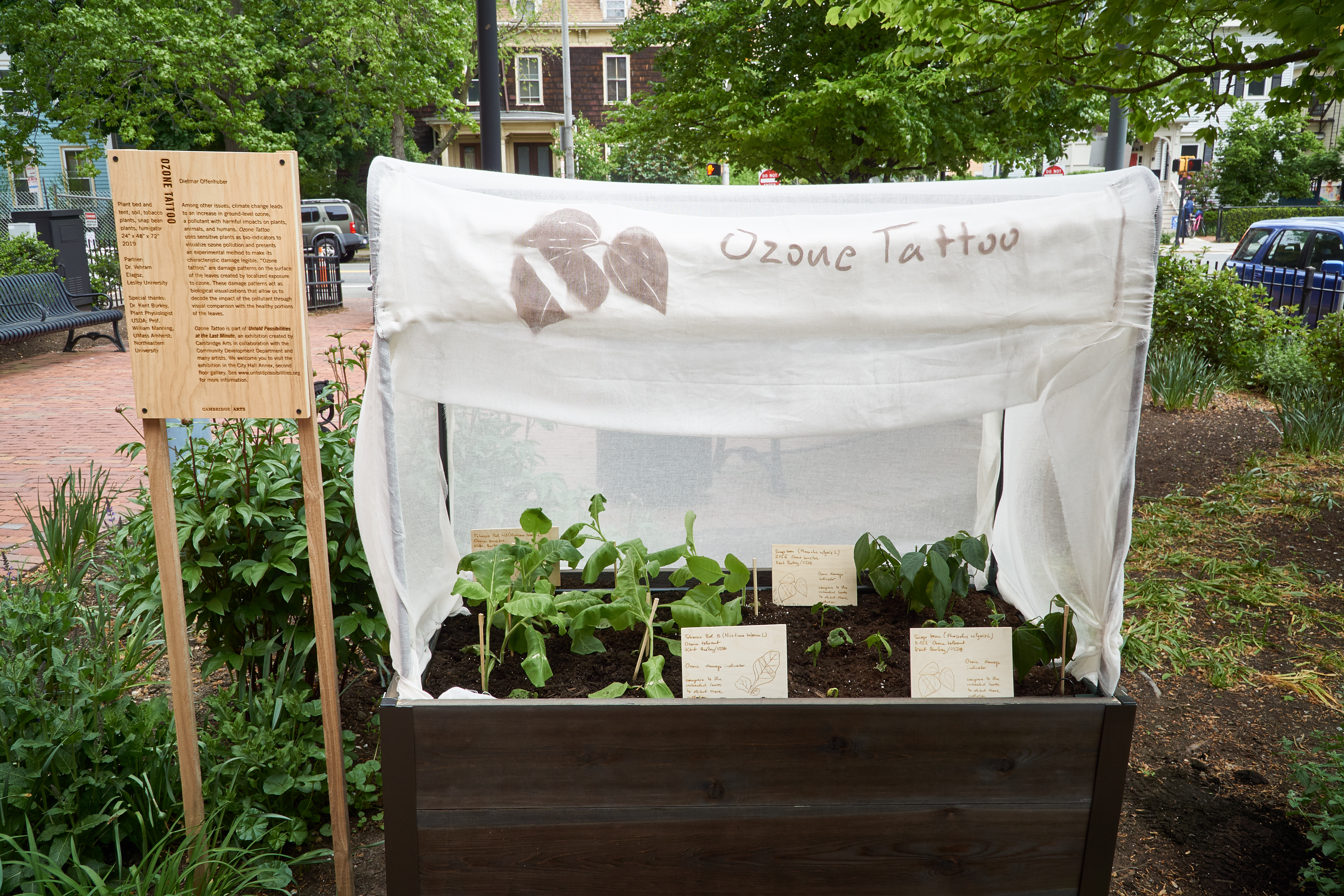Dietmar Offenhuber, associate professor and department chair of art and design in the College of Arts, Media and Design, has won a Falling Walls award for his “Ozone Tattoo” project, which uses indicator plants to measure ground-level ozone pollution.

“Ground-level ozone is a major pollutant” that is highly corrosive, Offenhuber wrote in an email. “It affects all living beings, especially respiratory systems in humans, animals and plants.” Ozone is also highly volatile, which makes it difficult — and expensive, using traditional systems — to track or measure.
Ozone Tattoo solves that problem, empowering citizen scientists to track the effects and prevalence of ground-level ozone in their own communities.
“Ozone Tattoo is like a legend on a map,” Offenhuber wrote. “It is a visual damage pattern on an indicator plant that helps you compare and observe the features of the plant.”
Offenhuber built “a machine that delivers ozone in very targeted ways only on a single portion of a leaf,” he continued, which allows observers to learn the specific damage patterns that appear on a plant leaf in response to ground-level ozone.
Those observers might be institutional scientists or citizen scientists in a community with their own communal ozone gardens.
Offenhuber originally created Ozone Tattoo as part of an exhibition organized by Northeastern University professor Thomas Starr, in the department of art and design, titled Untold Possibilities at the Last Minute: Artists Respond to Climate Change.

Ozone Tattoo “is the second in a series of what I call ‘autographic visualizations,’” Offenhuber says. His new book from MIT Press, bearing that title, will be released in December.
Using the visual of the fallen Berlin Wall as an inspiration, the Falling Walls Foundation is “a not-for-profit organization based in Berlin, devoted to the mission of bringing together those who set out to tear down the next walls in science and society,” the group writes in its mission statement.
As a winner of the Falling Walls award, Ozone Tattoo is a contender for Science Breakthrough of the Year, 2023. The winner of that award will be announced at the Falling Walls Science Summit on Nov. 9, the 24th anniversary of the fall of the Berlin Wall.
Noah Lloyd is a Senior Writer for NGN Research. Email him at n.lloyd@northeastern.edu. Follow him on X at @noahghola.
